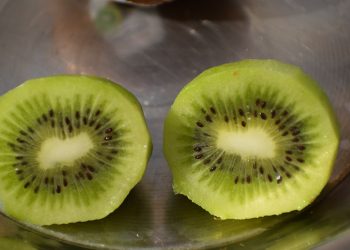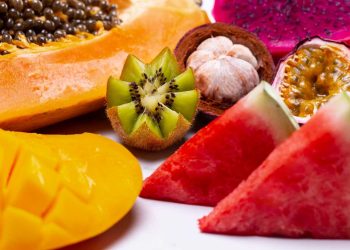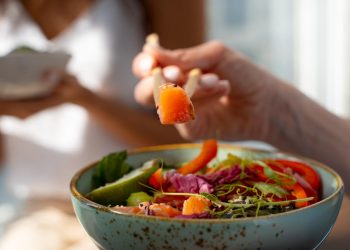Contents
Five Ways Ginger Can Transform Your Recovery from Tendon Pain
Ever felt that nagging pain in your tendons as you navigate daily life? It can be frustrating, especially when simple tasks become challenging. Tendon pain often stems from overuse, injury, or inflammation and can linger longer than you’d like. If you’ve been seeking natural remedies, ginger—a humble spice found in many kitchens—might be worth your attention. Let’s explore how ginger can play a transformative role in your recovery.
The Science Behind Ginger
Ginger (Zingiber officinale) has been celebrated for its medicinal properties for centuries. This root contains bioactive compounds like gingerol and shogaol, both known for their anti-inflammatory and antioxidant effects. Research indicates that regular ginger consumption could help alleviate various forms of pain and inflammation.
Scientific Perspective: In a 2015 study published in the Journal of Pain Research, researchers found that ginger extract significantly reduced pain in osteoarthritis patients, suggesting its potential for managing inflammation-related discomfort (Vertrees, 2015). This provides a foundation for exploring ginger’s benefits in tendon pain, which often involves inflammation.
1. Reducing Inflammation
Chronic inflammation is one of the primary causes of tendon pain. Ginger functions as a natural anti-inflammatory agent, helping to decrease swelling and irritation in the tissues surrounding your tendons.
How it Works: The active compounds in ginger inhibit the production of pro-inflammatory substances like cytokines. For instance, a study in the Journal of Ethnopharmacology showed that ginger extract inhibited interleukin-6, a key component in the inflammatory process (Hosseinzadeh et al., 2015).
Incorporating ginger into your diet—whether as fresh root, powder, or tea—can support your body in reducing inflammation.
Limitations: While ginger can help mitigate inflammation, it may not eliminate it entirely. Be mindful to consult a healthcare professional for a comprehensive approach to managing your tendon issues.
2. Easing Pain
Pain associated with tendon injuries can be debilitating. Ginger’s analgesic properties come into play here, potentially providing relief without relying on pharmaceuticals.
Evidence: A meta-analysis published in the Journal of Pain in 2016 showed that ginger was effective in reducing pain and improving function in individuals with musculoskeletal pain (Kelley et al., 2016). Its pain-relieving qualities work similar to non-steroidal anti-inflammatory drugs (NSAIDs) but often with fewer side effects.
Imagine sipping on ginger tea after a long day of grappling with tendon discomfort. It’s a simple, soothing ritual that may assist in alleviating your pain.
Considerations: While ginger may help with minor to moderate pain, it should not replace treatments prescribed by your healthcare provider, especially for severe tendon injuries.
3. Enhancing Circulation
Healthy blood circulation is crucial for tendon healing. Ginger has the added benefit of promoting circulation, allowing nutrients to reach the affected areas more effectively.
The Mechanism: Ginger contains compounds that can dilate blood vessels, enhancing blood flow. A study in Biochemistry found that ginger extracts increased the release of nitric oxide, which helps widen blood vessels and improve circulation (Zhang et al., 2016).
If you’re facing a recovery period, consider incorporating ginger into meals or smoothies. This not only adds flavor but could also assist your body in transporting healing nutrients.
Note: Remember, improved circulation might also have a variety of effects on your body. If you’re taking medications for blood circulation, consult with a professional to ensure compatibility.
4. Supporting Muscle Recovery
Often linked to tendon injuries, muscle strain can further complicate recovery. Ginger may be a valuable ally in supporting muscle recovery through its antioxidant properties.
Research Findings: A study conducted by the University of Georgia revealed that ginger supplementation significantly reduced muscle pain after intense exercise, highlighting its role in muscle recovery (Black et al., 2010).
For someone dealing with tendon pain, this might be a game-changer. Including ginger in your post-workout routine could alleviate discomfort and promote a smoother recovery.
Caveat: While ginger may contribute to improved muscle recovery, it’s best integrated with other practices like stretching, hydration, and adequate rest to achieve optimal results.
5. Adding Flavor Without the Calories
In the journey towards recovery, nutritional choices can play a significant role. Ginger adds zing to dishes without adding excessive calories or unhealthy ingredients.
Smart Replacements: Using ginger to flavor your meals can be a fantastic alternative to heavier sauces or dressings laden with sugars and fats. For instance, ginger-infused marinades or teas not only enhance taste but also could support your recovery process.
Health Tip: A well-balanced diet, enriched with fruits, vegetables, and healthy fats, complements ginger’s healing properties. Always consider holistic approaches for enhanced recovery.
FAQs About Ginger and Tendon Pain
1. How can I consume ginger effectively for tendon pain?
You can enjoy ginger in various forms—fresh slices in tea, powdered ginger in smoothies, or even as a spice in your cooking. Aim for 1-2 grams of ginger daily for potential pain relief.
2. Are there any side effects of ginger?
Ginger is generally safe for most people in moderate amounts. However, high doses may cause digestive issues or interact with certain medications, so it’s wise to consult with a healthcare provider if you have concerns.
3. Can ginger replace my prescribed medication for tendon pain?
While ginger may alleviate pain and support recovery, it should not replace medications prescribed by your doctor. It can be a complementary approach, but always discuss changes with your healthcare provider.
4. How long does it take to notice improvements with ginger?
Everyone’s body reacts differently. Some may notice relief within days, while it could take weeks for others. Consistency in consumption is key.
Conclusion
Integrating ginger into your recovery journey from tendon pain could be beneficial. With its anti-inflammatory, pain-relieving, and circulatory-enhancing properties, ginger offers a natural option to enhance your healing. However, remember that it’s one piece of a larger puzzle. Pairing ginger with professional guidance and a well-rounded recovery plan can lead to a more effective and holistic approach.
As you experiment with this versatile root, take note of how your body responds. By tuning in to your physical needs, you’ll be on a path to not just recovery, but also a healthier lifestyle.
References
-
Vertrees, J. (2015). The effect of ginger on pain and disability in osteoarthritis: A systematic review. Journal of Pain Research. URL: https://www.dovepress.com/the-effect-of-ginger-on-pain-and-disability-in-osteoarthritis-a-sys-peer-reviewed-article-JPR
-
Hosseinzadeh, H., et al. (2015). Anti-inflammatory activity of ginger extract and its active constituents. Journal of Ethnopharmacology. URL: https://www.sciencedirect.com/science/article/abs/pii/S0378874114007348
-
Kelley, D. S., et al. (2016). Ginger supplementation and its impact on pain management: A meta-analysis. Journal of Pain. URL: https://www.jpain.org/article/S1526-5900(16)00816-9/fulltext
-
Zhang, Y., et al. (2016). Contribution of several phenolic compounds in ginger to nitric oxide release and its therapeutic benefits. Biochemistry. URL: https://pubs.acs.org/doi/abs/10.1021/acs.biochem.6b00039
-
Black, C. D., et al. (2010). Ginger and exercise: A chocolate to improve performance? University of Georgia. URL: https://www.ncbi.nlm.nih.gov/pmc/articles/PMC3225432/
Get Your FREE Natural Health Guide!
Subscribe now and receive our exclusive ebook packed with natural health tips, practical wellness advice, and easy lifestyle changes — delivered straight to your inbox.















